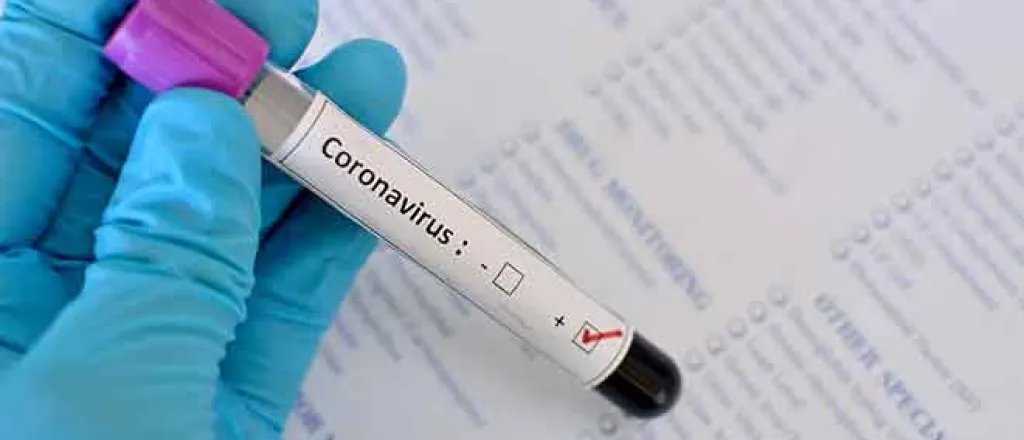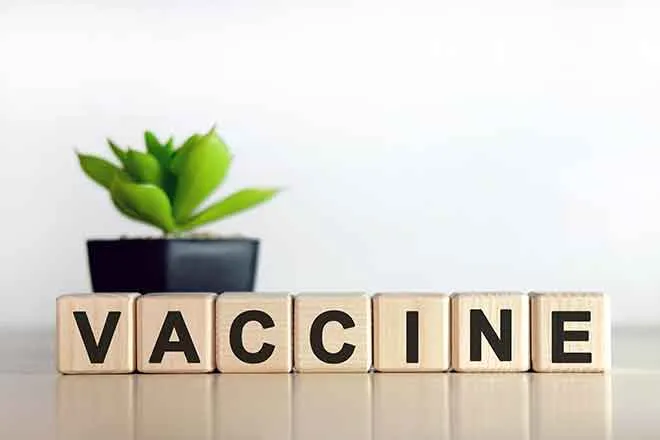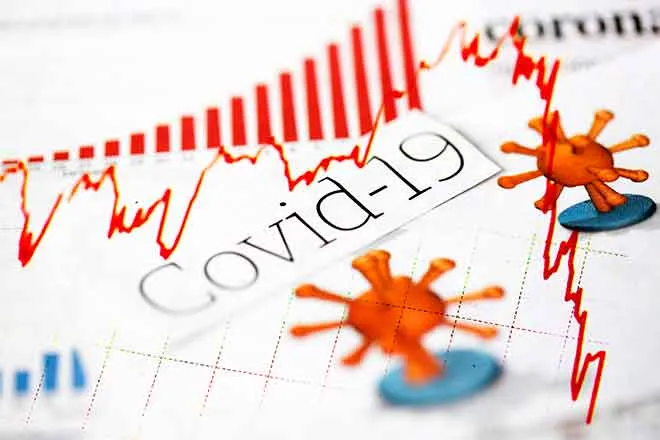
I Lived Through SARS and Reported on Ebola. These Are the Questions We Should Be Asking About Coronavirus.
I grew up in Hong Kong and was 13 when SARS swept through the city, infecting about 1,750 people and killing nearly 300. As a teenager, the hardest part was being stuck at home and missing my friends. I only started to pay attention to the daily death toll after my parents decided that’s what would dictate when I could go back to school. But the experience shaped me. I picked up personal hygiene habits, like pressing elevator buttons with my knuckles. And I developed a deep respect for front-line medical workers, many of whom labored around the clock until they, too, succumbed.
That was only my first experience with an outbreak.
In 2014, I was a rookie reporter on the Bloomberg News health desk helping to cover the growing Ebola crisis in West Africa when we got word that the U.S. had its first diagnosed patient. My editor looked down his row of reporters and his eyes fell on me, the one with no familial obligations. “Hey Caroline,” he said, “want to go to Dallas today?” The experience gave me a deeper look into how governments and scientists grapple with a fast-moving, deadly target. I learned about contact tracing as I tagged along with CDC disease detectives. A colleague and I delved deep into how the government’s cumbersome contracting process delayed the development of a possible treatment for Ebola. I later covered Zika, reporting on Florida’s lonely fight against the virus, as Congress gave the state little assistance.
Every time, I’ve seen the same gaps emerge in the public’s understanding of what’s really happening. On one side, I have epidemiologists and lab directors explaining to me, in excruciating detail, nuanced models and technicalities, like how PCR assays work. On the other side, I see oversimplified headlines and misleading statistics touted by government officials.
Now I’m on ProPublica’s coronavirus reporting team, speaking to dozens of sources every day, from epidemiology experts and worried medical workers to members of the public, who are not sure what to take from the headlines they’re seeing. ProPublica specializes in accountability journalism, and our goal is to find out what’s happening and let the public know of any shortfalls in emergency response.
Here’s what you need to know:
Testing Is Still Limited
On Tuesday, after days of growing clamor to make more testing available, Vice President Mike Pence announced that the administration was issuing new guidance that “will make it clear that any American can be tested” for COVID-19, the disease caused by the virus, and said that 2,500 kits would be sent out this week, an equivalent of 1.5 million tests.
Lifting restrictions on testing criteria is a much-needed step, but if your takeaway was that hundreds of thousands of Americans will be able to walk into doctors’ offices by Friday and immediately get tested, you’d be wrong.
It doesn’t matter if boxes upon boxes of kits are available if labs are struggling to set up the tests or are short on staff to run them. At the end of the day, what I want to know (and I imagine, what everyone wants to know) is how many people can be tested. That’s the unit that I am pressing public health officials and lab directors for when I interview them.
Here are some basics that may be useful to keep in mind: The CDC test kits can be thought of somewhat like a Blue Apron meal kit; there’s some assembly required before a lab can begin testing. It’s not like a protein bar, ready to eat straight out of the wrapper.
As of Wednesday, the Association of Public Health Laboratories, which represents public health labs across the United States, told me that each CDC test kit can run about 700 specimens. Note the “about” — you might have heard that each CDC test kit can run 1,000 specimens. That’s also true, but labs use up a certain amount of material in the process of setting up the kit and also to ensure that all the results from actual patient samples are accurate. So that’s where the “about 700” number is coming from.
None of those numbers, so far, are in units of what I care about — patients. We’re still talking about samples and specimens. APHL says the labs are running two specimens per patient, to double-check the result. So that means you actually can only test 350 people per kit.
Reporters, if an official gives you a number that’s in samples, I urge you to follow up.
Instead of asking: How many test kits do you have?
Ask this: How many samples are you running per patient?
So that’s the kits. Let’s turn to staffing.
APHL told me on Wednesday that each public health lab can run about 100 samples per day. One hundred public labs received test kits from the CDC. When they’re all up and running, they’ll have a cumulative capacity of 10,000 samples a day. Remember, since we care about patients and not samples, divide by two. That’s 5,000 patients a day. (As of Thursday morning, 67 labs were taking patient samples, so that would come out to 3,350 patients a day.)
Many experts say we need far more testing capacity. A former FDA commissioner, Dr. Scott Gottlieb, told me that he’d like everyone with an influenza-like illness who tests negative for the flu to be able to get tested for COVID-19, which, given that we’re still in the midst of flu season, means a massive ramp-up would be required. In order to do that, the U.S. urgently needs academic medical centers to also come on board. Under pressure to expand capacity, the FDA loosened restrictions on Saturday to allow academic hospital labs to start testing. Some have. You can read more about that here. Testing giants Quest and LabCorp are also aiming to be online next week, which will help tremendously.
I urge reporters to keep labor capacity in mind when talking to their local labs.
Instead of asking: How many samples can you run?
Ask this: How many samples is your lab testing per day right now? How about at maximum capacity? How many hours does it take to get a result?
One last thing that’s good to know: There are commercial manufacturers at work to create off-the-shelf versions of these tests — the microwavable meal equivalent, if you will. But those companies have not given a precise timeline. Last week, Cepheid, a manufacturer based in California, told ProPublica it’s targeting the second quarter of this year for the release of its test.
The Death Rate Is Only an Estimate
The mortality rate is an awfully squishy number that’s being reported as if it’s a stone-cold fact. On Tuesday, a number of headlines trumpeted that the World Health Organization was saying the death rate was 3.4%. Some hand-wringing ensued over how this number was higher than the previous estimate of 2%.
Here’s what WHO Director General Tedros Adhanom Ghebreyesus said: “Globally, about 3.4% of reported COVID-19 cases have died.” Let’s zoom in on the word “reported.” The WHO puts out a daily situation report that you can find here. It defines confirmed as “a person with laboratory confirmation of COVID-19 infection.” As of Tuesday, the total number of deaths reported globally (3,112) as a fraction of the total number of confirmed cases reported globally (90,869) was 3.4%.
Here’s the problem, though. That denominator is laboratory-confirmed cases. As we know, in the U.S., it’s pretty hard to get tested right now. In fact, based on this definition, as of Wednesday night, the U.S. mortality rate based on CDC numbers — 9 reported deaths and 80 laboratory-confirmed cases — was 11%. You know that’s bogus. You know that’s because there’s not enough data, the denominator is pitifully small and we need to be testing a whole lot more people.
Over the last few weeks, many more countries have realized that the coronavirus has hit their shores. Some, like South Korea, are doing tons of testing and generating lots of data. Others, like the U.S., aren’t, as ProPublica has reported. The rate will also depend, country by country, on demographics (this virus is more deadly to the elderly) and resources (like ventilators). It’s not surprising that the global mortality rate based on confirmed cases might fluctuate for a while.
When most people talk about fatality rates, they’re thinking: If I get this, will I die? The only way to actually answer that question is to know how many people have been infected, and for now, that’s nearly impossible. As Marc Lipsitch, an infectious disease epidemiologist at Harvard’s T.H. Chan School of Public Health points out, deaths are the most obvious and easy thing to catch, whereas infected people who stay at home and those with no symptoms are incredibly hard to account for. That tends to skew the fatality rate higher, especially earlier on in an epidemic.
What we do know for now is that it’s more deadly than the seasonal flu, which generally kills far fewer than 1% of those infected, and less deadly than a disease like SARS, which killed about 10% of those infected during the outbreak in 2002-3.
When I write about the mortality rate, I try to use caveats like “estimated” or “scientists understand it to be around” so readers understand it’s not fixed in stone.
Instead of saying: The mortality rate is X%.
Say this: Scientists estimate the mortality rate is X%, based on the information they have.
Be Careful with Projections
Another slippery number out there is what’s known as the basic reproduction number, R₀ (pronounced R-naught). It’s a measure of contagion, the average number of people who will catch the disease from a single infected person. For similar reasons as above, this number is currently a moving target, as more data is gathered from around the world. So far, estimates have largely been in the range of 2 to 3.
What this means for reporters is that if someone tries to say something like, there’s going to be X number of cases by a certain date, that can’t be a hard and fast number. I’d want to know what assumptions were used to calculate that forecast. What was the R₀ presumed? How about the serial interval, the duration between the onset of symptoms between one case and its secondary cases? Tweaking either of those numbers by just a bit can result in very different forecasts, which you can see by playing around with this interactive tool by the University of Toronto. Generally, I shy away from putting a projection in a headline, where any hope of nuance might be lost, but if I have to, a range is safer than a single number that readers might interpret as somehow immutable.
Furthermore, as of early March, there are many fundamental questions about the novel coronavirus that scientists still don’t fully understand. For example, while it’s clear that the primary method of transmission is via droplets, drops of fluid from the mouth or nose emitted when an infected person coughs or sneezes, it’s not clear if it can transmit as an aerosol, meaning it is airborne and floats around (this is considered to be unlikely). It’s also not conclusive if the virus can be spread by infected people before they present any symptoms.
Instead of asking: How many cases will there be at X point in time?
Ask this: What assumptions were used to calculate your prediction? What’s the upper and lower range of your projection?
Information Is Changing Quickly and May Soon Be Out of Date
One last thing I’d like to add: Even more so than usual, things are moving quickly. I’ve been on interviews where the information I was given was outdated — as in just plain wrong — by the time I filed my draft 12 hours later. This is, of course, terrifying as a reporter. So I’m trying my best to put information like “as of Wednesday morning” alongside facts and figures in my stories, and I’m encouraging my sources to update me as often as they can.
OK, but How Do I Protect Myself?
Over the last two days, I’ve gotten numerous DMs over Twitter from concerned members of the public, asking me what they should do to be safe. Honestly, this breaks my heart and speaks to a failure of local health officials to educate them. I’m having the same conversations over and over again, so I thought I’d share some of my thoughts here. I’m not a medical professional, so this is not medical advice.
Start by knowing yourself. Are you elderly or immunocompromised? Young and healthy? Your risk varies depending on your personal profile. If you’re concerned about your health, I encourage you to talk through your fears with your doctor. I’m 29; I know there’s little chance that this virus would kill me given the information I’ve seen. (In data published last month by the Chinese CDC, out of more than 72,000 diagnosed cases, 8.1% were 20-somethings, and the fatality rate in that age bracket was 0.2%.) That said, given my personal medical history and tendency to get bronchitis, I would really prefer not to get infected.
So how does that translate into action? Here have been my personal choices so far. I’m still flying; I just got off a plane to attend a reporting conference in New Orleans. (I would not attend a conference in the Seattle area, however, given how signs are pointing to widespread community transmission.) I don’t see how being on a plane increases my personal risk any more than being on the New York City subway. That said, I am not shaking any hands at this conference, and I’m ramping up my hygiene game: washing my hands more frequently and encouraging my colleagues to do so as well.
I’m aware of the possibility that I may need to work from home in the near future, if I or my husband get sick, or if there’s an explosion of cases in New York City and social distancing measures are encouraged. So we are slowly but methodically picking up a little bit of extra food with every grocery run (for our two cats as well!), just so that we’d have enough at home if we need to be indoors for a few weeks. I’m not panicked, nor should you be. I’d encourage you to check on your neighbors — especially the older ones, or those with young children, and see if you can pick up some additional groceries for them.
Even if we have to stand a little farther apart from one another, the best way to get through this is with a bit of extra compassion to bridge the gap.
Filed under:
















